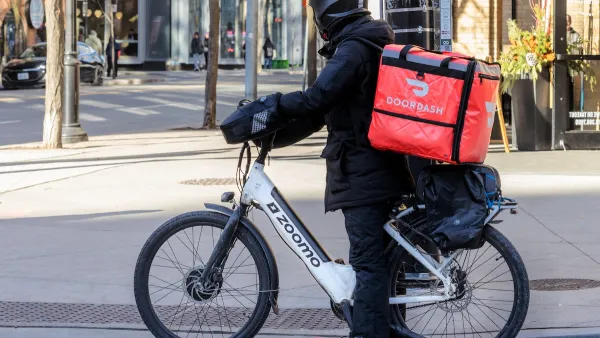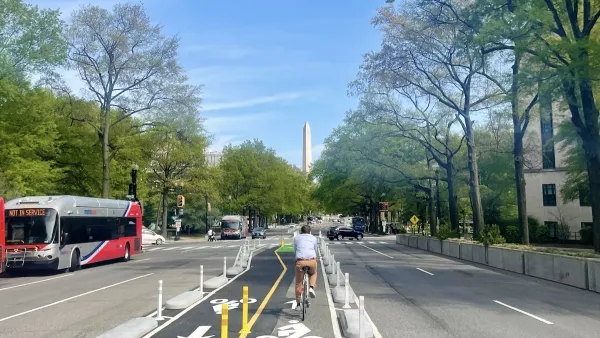Over the last few weeks, I have participated in two panels on Social and Environmental Sustainability. The first one was at the Ringling School of Art’s "Designing for Life" conference, the second was at BuildBoston where Adaptive Environments organized a day long symposium on Universal Design. In both cases, design took center stage. Design as a means towards change, and design as a business force. This is good news for advocates of Universal Design.
Over the last few weeks, I have participated in two panels on Social and Environmental Sustainability. The first one was at the Ringling School of Art's "Designing for Life" conference, the second was at BuildBoston where Adaptive Environments organized a day long symposium on Universal Design. In both cases, design took center stage. Design as a means towards change, and design as a business force. This is good news for advocates of Universal Design.
Universal Design celebrates the complexity of humans. That richness is the catalyst for design innovation that responds to the diversity of human experience. Social sustainability attends to the human experience and design is the method to achieve it.
A variety of voices are contributing to a resurgence of respect for design. Once again it can be respected as an effective force for social change. I say "again" because I have a dim understanding that design once held a place of respect that it has never seen in my lifetime. For the past 40 or 50 years, we have celebrated design within the design community, but the ability of design to change lives and affect human quality of life has been degraded.
While I am certain there is still a majority who believe design is mere decoration, there are surprising and insistent voices - outside the design community - that are becoming design champions. Let me offer a few examples:
In 2001, the World Health Organization (WHO) moved from defining disability as a condition of human illness recognizing, instead, that it is an ordinary human condition that most people will experience during some time in their life. Disability is defined as contextual – it is created out of an individual's interaction with the environment. In other words, a person is disabled if they are not able to open a door but, if the door is designed to recognize that a person is approaching and opens automatically, then everyone passes through the door with the same ease. By reframing the concept, one can understand how significantly a designer can improve the human experience of the environment. The WHO calls for identifying facilitators that promote health and identifies Universal Design as a framework for creating facilitators. A change in design can facilitate a better interaction with the environment.
Bruce Nussbaum is a Managing Editor at Business Week magazine. Listen to what he said in an address to the Royal College of Art in June (‘07)
Innovation, design, and technology are all flowing into one another to form a single river of roaring change radically altering our culture, and especially business culture.
He continues:
Design is so popular today mostly because business sees design as connecting it to the consumer populace in a deep, fundamental and honest way. An honest way. If you are in the myth-making business, you don't need design. You need a great ad agency. But if you are in the authenticity and integrity business then you have to think design.
I assure you that this is not my father's Business Week. The magazine that he was reading would not have imagined hiring an editor for Innovation and Design.
My last example is the Sept/October issue of Good Magazine. Their motto is "media for people who give a damn" and the issue theme is Design Solutions. In the introduction to the issue, Andrew Price observes, " design has slowly assumed the role of a proper noun. Stores sell Design " (with a capital "D"). As Price goes on to say, design is:
much more potent and exciting as a verb. Beyond improving the living rooms of those for whom Design is already within reach, design will improve the lives of every person on Earth.
Design, as a noun, is a product - an answer to a problem. Design, as a verb, is a means - a process, a framework by which you find solutions, with which you turn something you can imagine into something you can experience.
What is causing this change in attitude towards design after so many decades of disdain?
In my quite unscientific observation, I suggest that the sustainability movement has had a hand. Architects have been leaders, and design is our method. Although many people still equate sustainability with energy savings, most people deeply entrenched in the sustainability movement embrace an inclusive and holistic understanding of sustainability - of sustainability as a goal that results from systemic change in the way that we live, work, play, travel, eat and conduct our politics. We need to broaden everyone's understanding of sustainability and how design leads us to environments, products and systems that are beautiful, usable and sustainable.

Maui's Vacation Rental Debate Turns Ugly
Verbal attacks, misinformation campaigns and fistfights plague a high-stakes debate to convert thousands of vacation rentals into long-term housing.

Planetizen Federal Action Tracker
A weekly monitor of how Trump’s orders and actions are impacting planners and planning in America.

San Francisco Suspends Traffic Calming Amidst Record Deaths
Citing “a challenging fiscal landscape,” the city will cease the program on the heels of 42 traffic deaths, including 24 pedestrians.

Bend, Oregon Zoning Reforms Prioritize Small-Scale Housing
The city altered its zoning code to allow multi-family housing and eliminated parking mandates citywide.

Amtrak Cutting Jobs, Funding to High-Speed Rail
The agency plans to cut 10 percent of its workforce and has confirmed it will not fund new high-speed rail projects.

LA Denies Basic Services to Unhoused Residents
The city has repeatedly failed to respond to requests for trash pickup at encampment sites, and eliminated a program that provided mobile showers and toilets.
Urban Design for Planners 1: Software Tools
This six-course series explores essential urban design concepts using open source software and equips planners with the tools they need to participate fully in the urban design process.
Planning for Universal Design
Learn the tools for implementing Universal Design in planning regulations.
planning NEXT
Appalachian Highlands Housing Partners
Mpact (founded as Rail~Volution)
City of Camden Redevelopment Agency
City of Astoria
City of Portland
City of Laramie






























